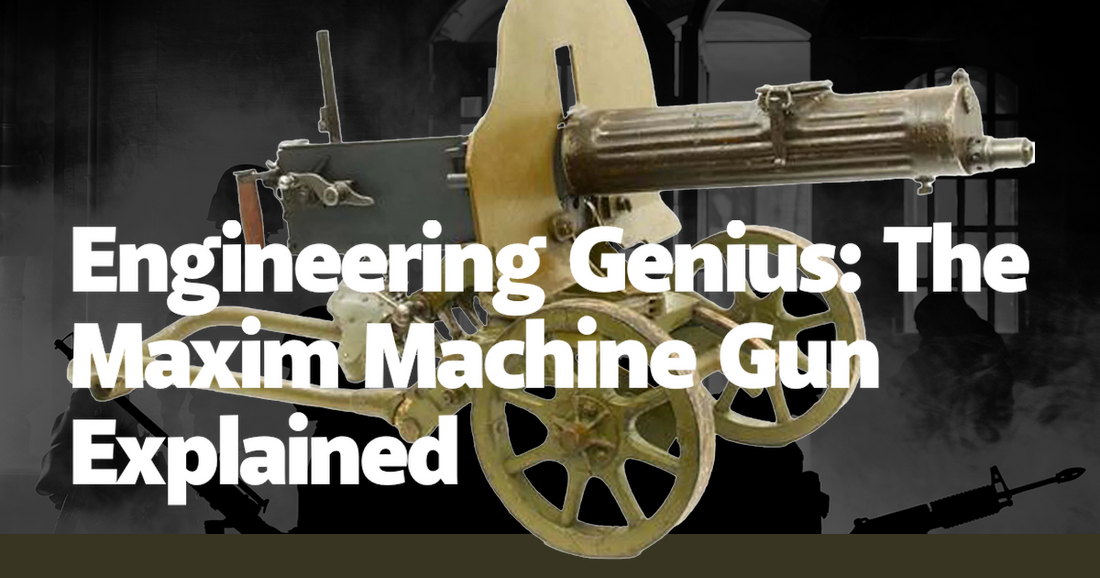In the annals of military history, few inventions have had as transformative an impact as the Maxim machine gun. Conceived by Sir Hiram Stevens Maxim in the late 19th century, this weapon fundamentally altered the landscape of warfare, ushering in an era of unprecedented firepower and tactical evolution. The Maxim gun was not merely a technical marvel; it was a harbinger of the brutal efficiency that would come to define modern combat. Its inception and subsequent deployment serve as a testament to human ingenuity and the relentless pursuit of military superiority.
The Maxim machine gun's most revolutionary feature was its ability to harness the energy of the recoil to automatically chamber the next round, effectively making it the first fully automatic weapon. This innovation was a stark departure from the manually operated firearms of the time, which required soldiers to expend precious seconds reloading after each shot. By contrast, the Maxim gun could fire up to 600 rounds per minute, a rate that was previously unimaginable. This leap in firepower meant that a single Maxim gun could replace dozens of riflemen, dramatically shifting the balance of power on the battlefield.
The technical brilliance of the Maxim gun lay in its relatively simple yet highly effective mechanism. The gun utilized a toggle-lock system that absorbed the recoil energy generated by the firing of a round. This energy was then used to eject the spent cartridge, chamber a new one, and reset the firing mechanism. The entire process occurred in a fraction of a second, allowing for continuous, rapid fire. This mechanical efficiency was complemented by the gun's robust construction, which was designed to withstand the rigors of prolonged combat. The Maxim gun's reliability and durability made it a favored weapon among military forces worldwide.
One of the earliest and most notable deployments of the Maxim machine gun was during the Battle of Omdurman in 1898. British forces, equipped with Maxim guns, faced a vastly larger Sudanese army. The outcome was a stark illustration of the weapon's devastating effectiveness. The Sudanese, armed primarily with spears and outdated rifles, were decimated by the relentless hail of bullets from the British Maxim guns. This battle underscored the profound tactical advantage provided by the Maxim gun and foreshadowed the grim realities of future conflicts where machine guns would dominate the battlefield.
The psychological impact of the Maxim gun on both soldiers and civilians cannot be understated. For those on the receiving end, the weapon's relentless barrage was both terrifying and demoralizing. The sound of rapid, continuous gunfire became synonymous with impending doom. Conversely, for the operators of the Maxim gun, there was a sense of invincibility, knowing they wielded a weapon of unparalleled destructive power. This psychological edge was a crucial factor in many engagements, often tipping the scales in favor of the side equipped with Maxim guns.
Despite its formidable capabilities, the Maxim machine gun was not without its limitations. The gun's weight and the need for a stable mounting platform made it less mobile than later machine guns. Additionally, the weapon required a team to operate effectively, with one soldier handling the firing and another managing the ammunition supply and cooling system. These logistical challenges, while significant, did little to diminish the Maxim gun's overall impact. In fact, they spurred further innovations in machine gun design, leading to the development of lighter, more versatile models in subsequent years.
The legacy of the Maxim machine gun extends beyond its immediate tactical advantages. It played a pivotal role in shaping military doctrine and strategy in the early 20th century. The concept of "firepower over manpower" became a guiding principle for many armies, influencing everything from infantry tactics to fortification design. The Maxim gun's success also accelerated the arms race among major powers, as nations scrambled to develop their own automatic weapons and countermeasures. This relentless pursuit of military innovation set the stage for the technological advancements that would define the world wars.
In retrospect, the Maxim machine gun stands as a symbol of the dual-edged nature of technological progress. While it represented a remarkable achievement in engineering and a significant leap forward in military capability, it also heralded an era of unprecedented carnage and destruction. The weapon's ability to inflict mass casualties with ruthless efficiency forced humanity to confront the sobering realities of industrialized warfare. As we reflect on the history of the Maxim gun, we are reminded of the profound and often paradoxical impact of human ingenuity on the course of history.

